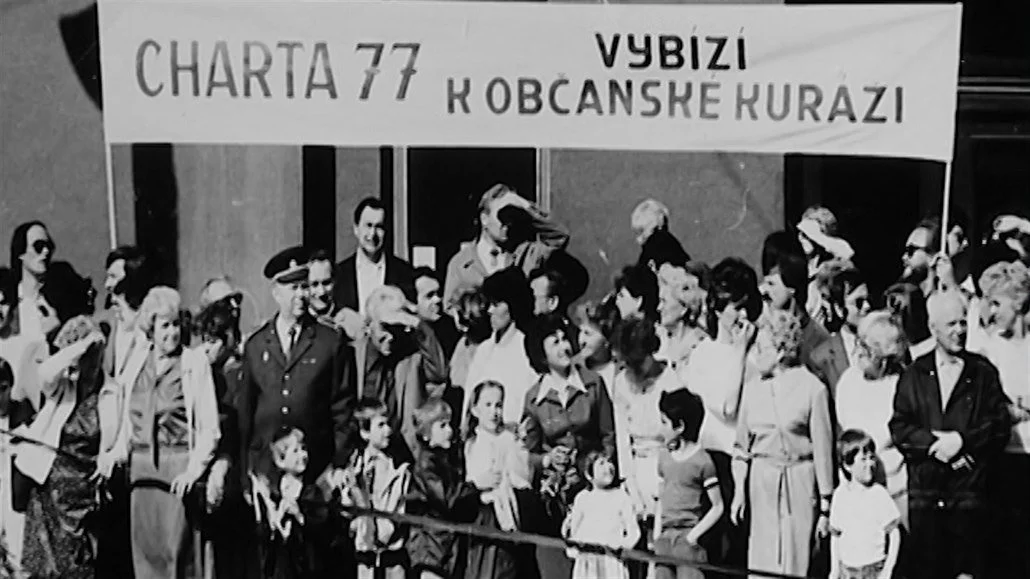Vlasta Adele Vraz was a Czech-American who served as the director of American Relief for Czechoslovakia after World War II and was arrested as a spy by the Communist government in Czechoslovakia. She was released, becoming the Czechoslovak National Council of America. She spent most of her life before World War II surrounded by writers and writing for her family’s newspaper, the “Svornost.” After her release, she continued as an editor for the American Bulletin and Vestnik before she died in 1989.
Jiřina Šiklová: Sociologist, Gender Studies Professor, and Dissident
Czech Cottage Culture
Czech Wine: A Brief History
From legends to wine festivals, Czech wine has a rich history. Various rulers implemented regulations for viticulture, and it eventually grew to a large scale operation in the Czech Republic. Although many vineyards were left abandoned after the revolution, through the 19th and 20th centuries, Czech viticulture bounced back to the point of becoming a worldwide phenomenon.
Dagmar Šimková (1929-1995)
Dagmar Šimková was a political prisoner during the communist repression. She suffered a long prison sentence and was able to pursue her education and help others in the prison system later in life. Šimková’s ordeals during her time as a political prisoner were shaped both by her femininity turned against her and her bonds with fellow prisoners that kept them together. Her most courageous acts involved hunger strikes in protest against the treatment of her fellow prisoners.
Meda Mladkova
Meda Mladkova was a patron of the arts who helped support Czech artists stuck behind the Iron Curtain. She trained to be a dancer but decided to leave Czechoslovakia after witnessing how terribly the Germans who remained in the country were treated at the end of the Second World War. Even when she met the Ministers of Culture and Education and the Director of the Nationa Gallery, she truthfully and successfully stood up for artistic freedom.
Hana Podolska: The "Coco Chanel" of Czechoslovakia
Hana Podolska was “the” fashion designer of the 1930s and 1940s in Prague. Her gowns and garments could be seen in well-known films worn by famous actresses, many magazines, and popular political figures. Before her life of fashion her father, who tragically died of tuberculosis, was an architect while her mother was a housewife. After moving to and growing up in Prague, Podolska worked with the local seamstress, which became the genesis for her fulfilled desire to be a fashion designer.
Czech Beer : A Brief History
From the Brevnov Monastery to the modern-day Pilsner, the Czech people have been enjoying beer for over a thousand years. Known as the beer of tradition, Czech beer is ingrained into history itself. When beermaking was banned. the Brenov Monastery, as the first-ever Bohemian brewery, was exempt. Initially, after the ban on brewing ended, only noble families or homeowners were allowed to brew beer. It was in 1842 that the famous Pilsner was created.
Charter 77
Charter 77 is a declaration of human rights published by a group of Czech citizens. It declares that “Charter 77 is not an organization,” rather an idea. Support for Charter 77 mounted as publicly supporting it became more dangerous and life-uprooting. Even still, private and public support for the declaration of peaceful resistance continued, even 40 years into it’s creation.
Palach Week
Jan Palach was a Charles University student who protested the Soviet-led invasion of Czechoslovakia and the Warsaw Pact by self-immolation. His protest inspired further protests, including a hunger strike in Wenceslas Square. These protests further inspired resistance throughout the rest of Prague, and then Europe.
The Czech Response to the American Civil Rights Movement
The American Civil Rights Movement became a method of propaganda against the United States to gain support and sympathy from non-socialist states. The Czechoslovakian government would invite activists to the nation so that communism would be promoted, including singer Paul Robeson, who would sing at the Prague Spring classical music festival in 1949. Between the 1960s and 1980s, Czechoslovakia continued to push communism in African nations, broadcasting the benefits of communism and what it would provide to Africans.
Rock Music in Czechoslovakia
The history on rock music in Czechoslovakia begins with its introduction in the early 1950s, beginning apolitically. By 1968, the apolitical aspect changed, in response to the 1968 Soviet bloc invasion, causing rock music to finally rebel and criticize the government, through satire and cryptic messaging, as the lyrics and content of rock songs were monitored.
Ten Popular Breweries in the Czech Republic
The Czech Republic's Communist-Era Architecture
For the Communist countries in Eastern Europe, the necessary rebuilding following World War II was accomplished in the construction style that the Soviet Union popularized. As a result of this period, the Czech Republic has many buildings and monuments that differ significantly from the historic ones surrounding them, serving as a reminder of its Communist era.













